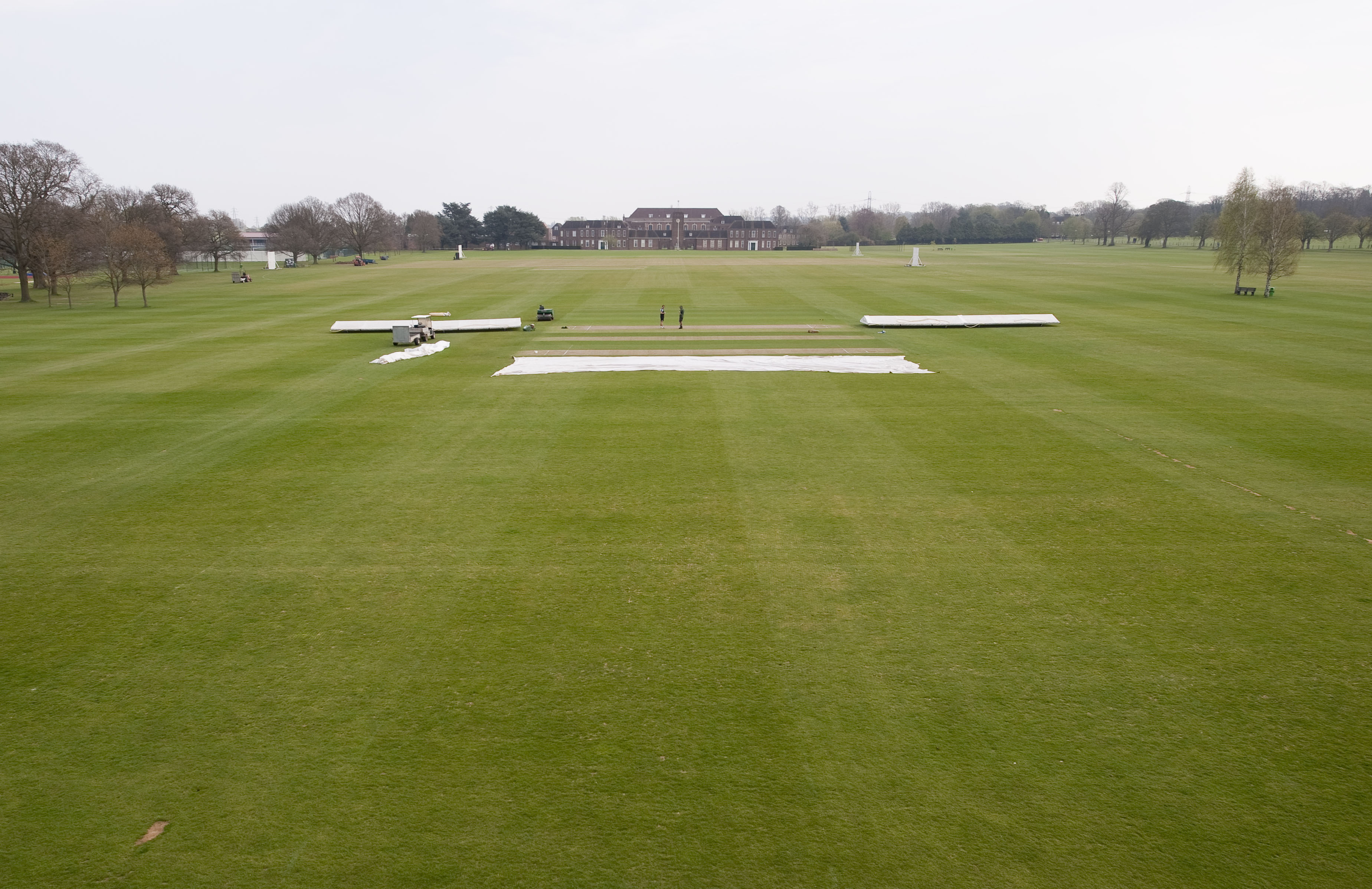Damage to the outfield can be caused by a number of factors such as:
- Cricket player wear and tear (especially on bowler runups).
- Wear and tear from other sports played on the outfield.
- Damage from machinery and machinery routes to the square.
- Damage from pests and diseases (from the microscopic to various mammals digging and foraging)
- Shrinking clay soils (in some outfields, depending on soil type)
- Sunken drain lines where the soil has shrunk or the backfill has not been consolidated properly during installation.
- Flood damage
- Chemical spills or machinery breakdown
- Vandalism
Before you do any repairs, try and understand how the damage has occurred and think about how to prevent it happening again.
The method to repair will depend on the cause, but you should pay particular attention to:
- Holes, digging and depressions – these can cause serious injury to players and should be repaired with a divot mix of soil/rootzone and seed, or by cutting in turf harvested from outside the playing area as soon as possible.
- Bare areas – these are more likely to become weed-infested than see grass regrowth – so these should be repaired as per the methods for ‘Holes, digging and depressions’.
- If damage is from scalping or scrubbing of machines or mower blades – look at the levels of your outfield and the set up of your machinery. It may be necessary to increase cut heights slightly or smooth areas of the outfield. Scrubbing is usually caused by turning too tightly, repeated turning in the same areas of the outfield, or by machinery set up – so look at all these aspects carefully.
- Always make sure outfields are renovated after winter sports use – especially in goal mouths or areas that are scrum-damaged. If you are renting out your outfield to other sports, make sure you allow for the costs of renovating in your rental charges for use of the outfield. Junior football and rugby can actually help to control thatch on outfields over the winter but usage/wear should be controlled during bad weather in particular and outfields renovated before the cricket season to makes sure that they are safe for cricket use.
- Sunken drain lines should always be filled with a material compatible with the drainage backfill to avoid sealing drains off. Do not allow sunken drain lines to persist as this problem does not get better on its own and can cause balls to jump up from the outfield, endangering players.
- The right solution for chemical, oil or fuel spills on grass will depend on the particular material and you should always consult the label for advice on clear up of pesticides.
- Note that it can be very difficult to control shrinking on un-irrigated outfields and this can impact on safety during play. Small cracks can be filled either locally or by topdressing and brushing in but this can be uneconomic during very dry periods on high shrinkage clay soils because the cracks will be too large and too numerous.


 Tweet
Tweet